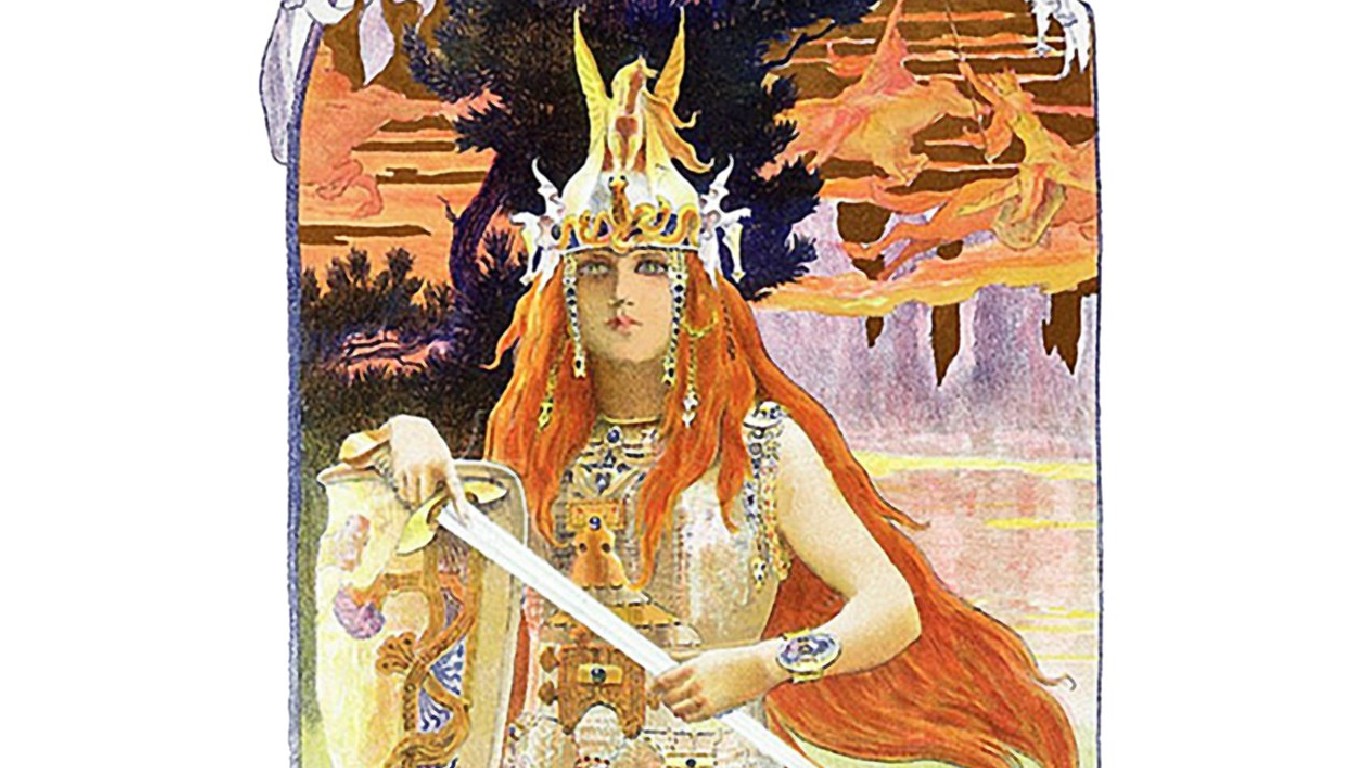
According to Brookings, only 16% of the U.S. military today is female. Until 1948, in fact, women couldn’t join the armed forces per se, only serve in auxiliary positions – and it wasn’t until the Obama administration that all combat roles were opened to them.
For many centuries, around the world, patriarchal leadership disdained the idea of women in a military role. Yet history records the exploits of queens who broke the mold, emerging at the helm of great battles and leading their armies to victory. (Male rulers sometimes took to the battlefield themselves, of course. Here are some warrior kings who led their own armies.)
To identify the queens who led their own armies, 24/7 Tempo consulted a variety of sources including Military History Now, Black Past, Ancient Origins, the Female Soldier, National Geographic, and the Warrior Queen Project, as well as encyclopedia sources such as Britannica, as well as encyclopedia sources such as Britannica, and other publications.
Eight of the warrior queens on our list lived in Europe, eight lived in Asia, and four lived in Africa. A number of these monarchs had a common enemy, though at different periods: the Romans. The empire was a significant foe for Amanirenas of Kush, Zenobia of Palmyra, Teuta of Illyria, Queen Boadicea of the Celts, and Mavia of present-day Syria
Whoever they were fighting, these queens faced many challenges. On top of military decision-making, they had to meet the additional challenge of trying to lead societies who believed women were not equipped to make important decisions, much less order men around on the battlefield. (These are the greatest women in military history.)
Click here to see 20 warrior queens who led their own armies
How did warrior queens rise to military leadership in predominantly patriarchal environments? Many were able to do so only after their husband – the king or emperor – had perished, or a male family member had died, passing power along to them. However they may have come to be in charge, though, they all showed courage and determination, leadership ability, and a grasp of military tactics. They were formidable foes.

Æthelflæd
> Kingdom: Mercia (present-day England)
> Years in power: 911-918
Æthelflæd, the daughter of Alfred the Great, ruled Mercia in the Anglo-Saxon kingdom of Wessex alongside her elderly husband, Æthelred. She protected her people against Viking, Danish, Welsh, and Irish raiders by adding military infrastructure and personnel across her land. She further blocked Viking invasion by capturing Derby, a stronghold of Viking invaders.
[in-text-ad]
Amage
> Kingdom: Sarmatia (western region of Scythia – present-day Russia))
> Years in power: 2nd century B.C.
Queen Amage was the brains behind Sarmatian military strength, gaining a better reputation as a leader than her husband, King Medosaccus. When a neighboring people, the Chersonesians, asked for her help fending off the Crimean Scythians, she was up for the task. She personally led a group of soldiers into the Scythian kingdom and killed the Scythian rulers, freeing the Chersonesians from threat.

Amanirenas
> Kingdom: Kush (present-day central Sudan)
> Years in power: Circa 40-10 B.C.
Amanirenas was a Kandake (queen), bearing only one eye and powerful military prowess. At a time when the Roman empire was ferociously expanding its territories, Amanirenas took the offensive and headed straight into Egypt. She returned to Kush having captured Roman soldiers, conquered Roman outposts, and collected a variety of treasures, including a bronze Roman statue head.
Amanitore
> Kingdom: Meroë (Nubia) (present-day Sudan)
> Years in power: 1 B.C. – 20
Amanitore was another fierce “Kandake” warrior of Kush (Nubia). While records differ on whether she ruled in her own right or alongside her husband or son, Amanitore was part of a lineage of warrior queens. She is most known for overseeing the construction of at least 200 pyramids across her land.
[in-text-ad-2]
Amina
> Kingdom: Zazzau (present-day Nigeria)
> Years in power: 1576-1610
Queen Amina began learning about military matters as a child, as she prepared to rule Nigeria. She went on to win battles and conquer vast stretches of land. Her construction of “ganuwar Amina,” which are city border walls, is considered one of her greatest military contributions, helping to protect her people.
Ana Nzinga
> Kingdom: Mbande Ndogo and Matamba (present-day Angola)
> Years in power: 1624-1663
Queen Ana Nzinga was a military leader who fought repeatedly, often without success at first, against the Portuguese. She had more success with her diplomatic skills, helping subdue overt influence from Portugal and leading to a decrease in the intensity of the Portuguese slave trade.
[in-text-ad]
Arachidamia
> Kingdom: Sparta (southwestern Greece)
> Years in power: 331-circa 305 B.C.
Arachidamia was the queen of Sparta during the late 4th century B.C., but is best remembered for her actions after her grandson Eudamidas II had become co-ruler. Rather than leave the city during an invasion, she insisted that she and the other women in the city contribute to military efforts. Arachidamia, and other Spartan women, remained on the battlefield to help wounded soldiers, and helped fortify the city by constructing a border wall.

Artemisia I
> Kingdom: Caria (present-day Turkey)
> Years in power: Circa 480 B.C.
Queen Artemisia I assisted Persia’s King Xerxes during his expedition to conquer Greece, leading his naval fleet during the Battle of Salamis. Unfortunately the fleet was defeated, but she remained in high regard, and continued to serve as counsel to Xerxes.

Boadicea
> Kingdom: Celts (present-day England)
> Years in power: Circa 60
In response to the Roman Empire’s Britannic conquest, Queen Boadicea (also rendered Bodicca, and in several other spellings) led an uprising in defense of her people, the Celtic Iceni tribe. In doing so, she united Iceni tribes and led initially successful rebellions. She eventually died after a battle, leaving the Romans to solidify their rule over Britain. Queen Boadicea is still revered in Britain, and viewed as a warrior.
[in-text-ad-2]

Brunhilda
> Kingdom: Frankish kingdom of Austrasia (Parts of present-day France, Belgium, Germany)
> Years in power: 575-583, 595-599, 613
Daughter to the Visigothic King Athanagild, Queen Brunhild was both revered and reviled during her ruling. She was entrenched in conflict with several nobles, including Fredegund, who was responsible for the death of Brunhild’s sister. This led to the Battle of Aisne against the son of Fredegund, Chlothar II. Brunhild was defeated by Chlothar II, captured, and murdered.

Fredegund
> Kingdom: Franks (present-day France)
> Years in power: 584-597
Fredegund was the queen consort of Chilperic I. Chilperic I’s wife, Galswintha, was the sister of Brunhild, and Fredegund orchestrated her assassination, enraging Brunhild. Brunhild and Fredegund became enemies, with Fredegund leading familial battles against Brunhild and her kin for years. Fredgegund’s son eventually killed Brunhild.
[in-text-ad]
Fu Hao
> Kingdom: China (present-day China)
> Years in power: 13th century B.C.
Fu Hao was a military leader and politician in ancient China, and a wife of Shang dynasty Emperor Wu Ding. Little is known of her, but she apparently led several battles against the Tu-Fang tribe and other enemies of the Emperor. Fu Hao died before her husband, and was entombed lavishly, surrounded by hundreds of bronze relics, including weaponry and other military equipment.
Isabella I
> Kingdom: Castile and Aragon (present-day Spain)
> Years in power: 1474-1504
Queen Isabella I of Castile helped unify Spain by marrying Ferdinand, the heir apparent to the kingdom of Aragon. She sent Christopher Columbus on his exploratory voyage, and helped soldiers by installing mobile field hospitals. She won Spain back from the Moors during the end of the Reconquista in the late 1400s. Unfortunately, she also was responsible for the Alhambra Decree which violently expelled Jewish people from the country.
Mavia
> Kingdom: Nomadic tribes in Middle East (present-day Syria)
> Years in power: 375-425
Queen Mavia was a queen on the Arabian Peninsula who aimed to protect her people from invasion by the Roman Empire. While many male leaders doubted her abilities, the battles she led and cities she conquered resulted in Roman troops fleeing parts of Egypt. She eventually formed an alliance with the Roman military leader Emperor Valens.
[in-text-ad-2]
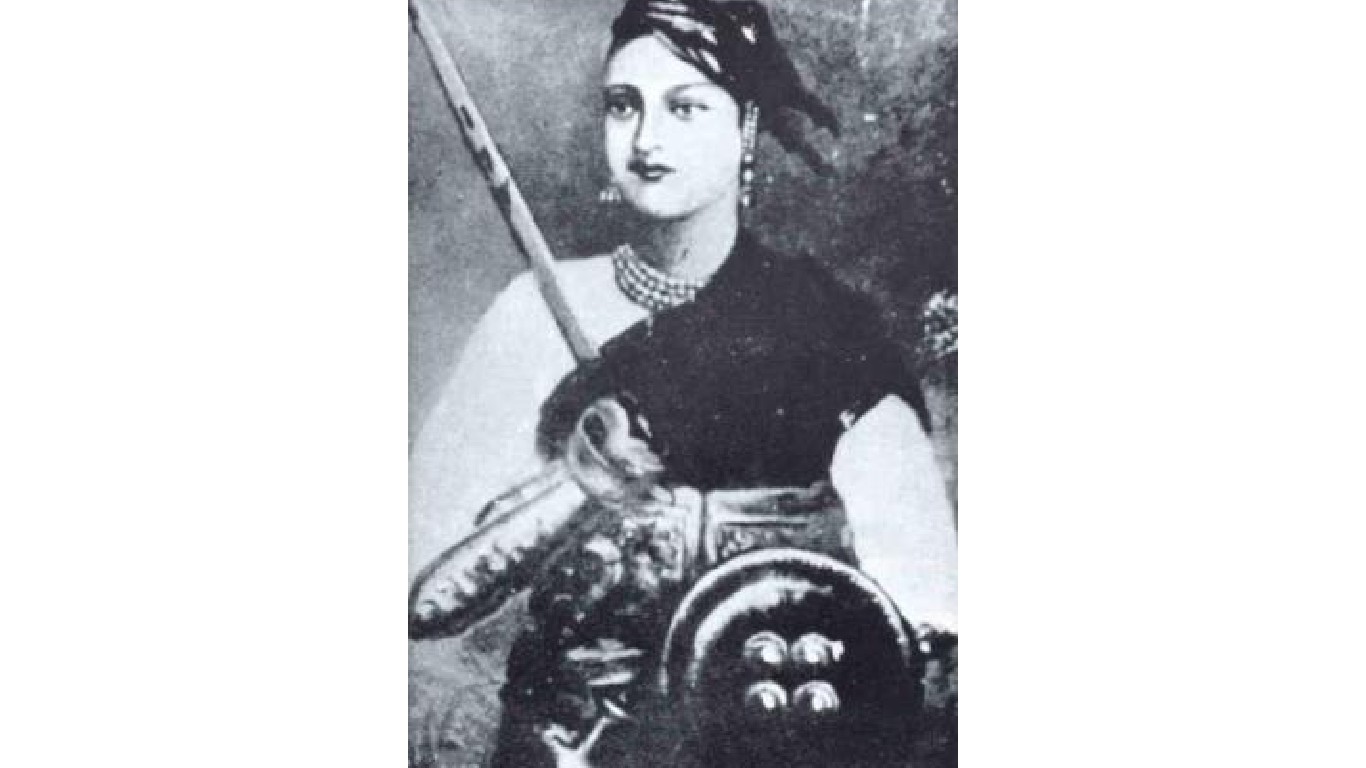
Rani Lakshmibai
> Kingdom: Jhansi, northern India
> Years in power: 1843-1858
Rani Lakshmibai was a symbol of the fight against British colonialism in northern India. She was born into a ruling family and married the Maharaja of Jhansi, Gangadhar Rao Newalkar, making her the Maharani, or queen, consort. After his death, the British East India Company refused to acknowledge their adopted heir and annexed their territory. After a period of peace, the British besieged Jhansi. She defended the city, and continued her struggle after she was forced to escape. Eventually, fighting on the battlefield herself, she was killed in combat.

Seondeok
> Kingdom: Silla region of Korea
> Years in power: 632-647
Queen Seondeok was the first reigning queen of Silla, one of the Three Kingdoms of Korea, inheriting the throne from her father, King Jinpyeong. During her time in power, she won the support of her people by lowering taxes and helping farmers, but others in power did not recognize her sovereignty due to her gender. She was forced to quell a rebellion by one of her high ranking officials Bidam in order to protect her position.
[in-text-ad]
Teuta
> Kingdom: Illyria (present-day western Balkans)
> Years in power: 231-227 B.C.
Teuta, known as the Pirate Queen. led the Ardiaei tribe in Illyria after her husband’s death as queen regent, making many enemies, and eventually surrendering to the Romans. After the death of a Roman envoy t sent to Illyria following complaints against the Queen, the Roman army went after Teuta. She surrendered most of Illyria to Rome, and eventually committed suicide to avoid capture.

Tomyris
> Kingdom: The Massagetae (Central Asia)
> Years in power: Circa 520s B.C.
Tomyris became queen of the nomadic Massagetae tribe after the death of her husband, the king, whose name is not known. Wishing to annex her kingdom, the Persian ruler Cyrus the Great proposed marriage, but she turned him down, spurring him to invade the Massagetae lands. Cyrus arranged an ambush, and killed Tomyris’s son, along with the commander of the Massagetae army. She exacted her revenge, sending her forces into battle against Cyrus, in the course of which he was killed. Finding his corpse, Tomyris cut off his head.

Trưng Trắc
> Kingdom: Vietnam
> Years in power: 40-43
Trưng Trắc and her sister, Trưng Nhị, led a rebellion against the Chinese Han Dynasty occupiers of their homeland, and Trưng Trắc became the first female Vietnamese monarch as well as the only queen regnant in the nation’s history. Together with her sister, she captured many Chinese settlements and declared themselves rulers. Unfortunately, the sisters were unable to resist a punitive expedition dispatched by the Chinese, leading to their defeat and eventual death.
[in-text-ad-2]
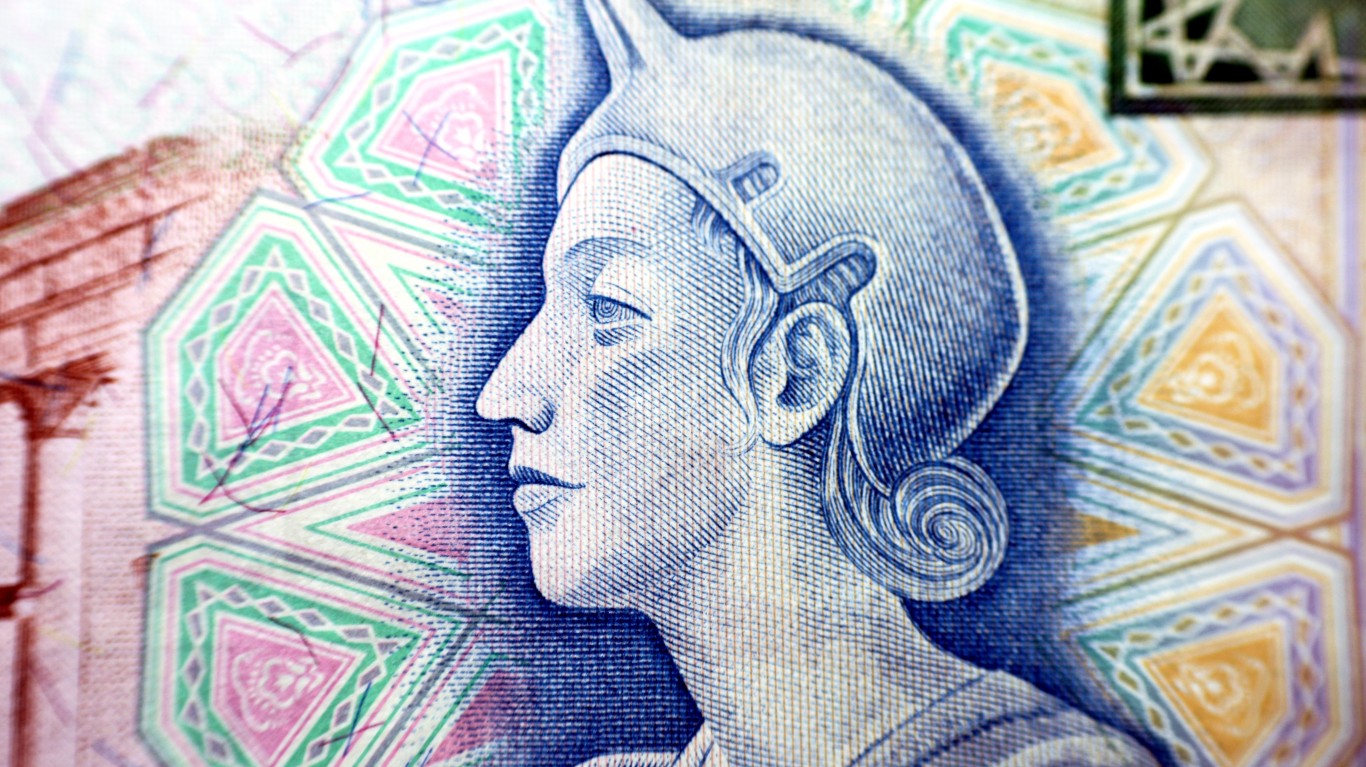
Zenobia
> Kingdom: Palmyrene Empire (present-day Syria)
> Years in power: 260-272
Zenobia was married to Palmyran king Odaenathus, but was widowed after he died in battle. She courageously fought against the Roman Empire, briefly gaining independence for her lands and parts of Egypt. Unfortunately, the Roman Emperor Aurelian captured Zenobia and occupied Palmyra, apparently sparing the queen’s life, though there are conflicting reports as to her fate .
The Average American Has No Idea How Much Money You Can Make Today (Sponsor)
The last few years made people forget how much banks and CD’s can pay. Meanwhile, interest rates have spiked and many can afford to pay you much more, but most are keeping yields low and hoping you won’t notice.
But there is good news. To win qualified customers, some accounts are paying almost 10x the national average! That’s an incredible way to keep your money safe and earn more at the same time. Our top pick for high yield savings accounts includes other benefits as well. You can earn up to 3.80% with a Checking & Savings Account today Sign up and get up to $300 with direct deposit. No account fees. FDIC Insured.
Click here to see how much more you could be earning on your savings today. It takes just a few minutes to open an account to make your money work for you.
Our top pick for high yield savings accounts includes other benefits as well. You can earn up to 4.00% with a Checking & Savings Account from Sofi. Sign up and get up to $300 with direct deposit. No account fees. FDIC Insured.
Thank you for reading! Have some feedback for us?
Contact the 24/7 Wall St. editorial team.
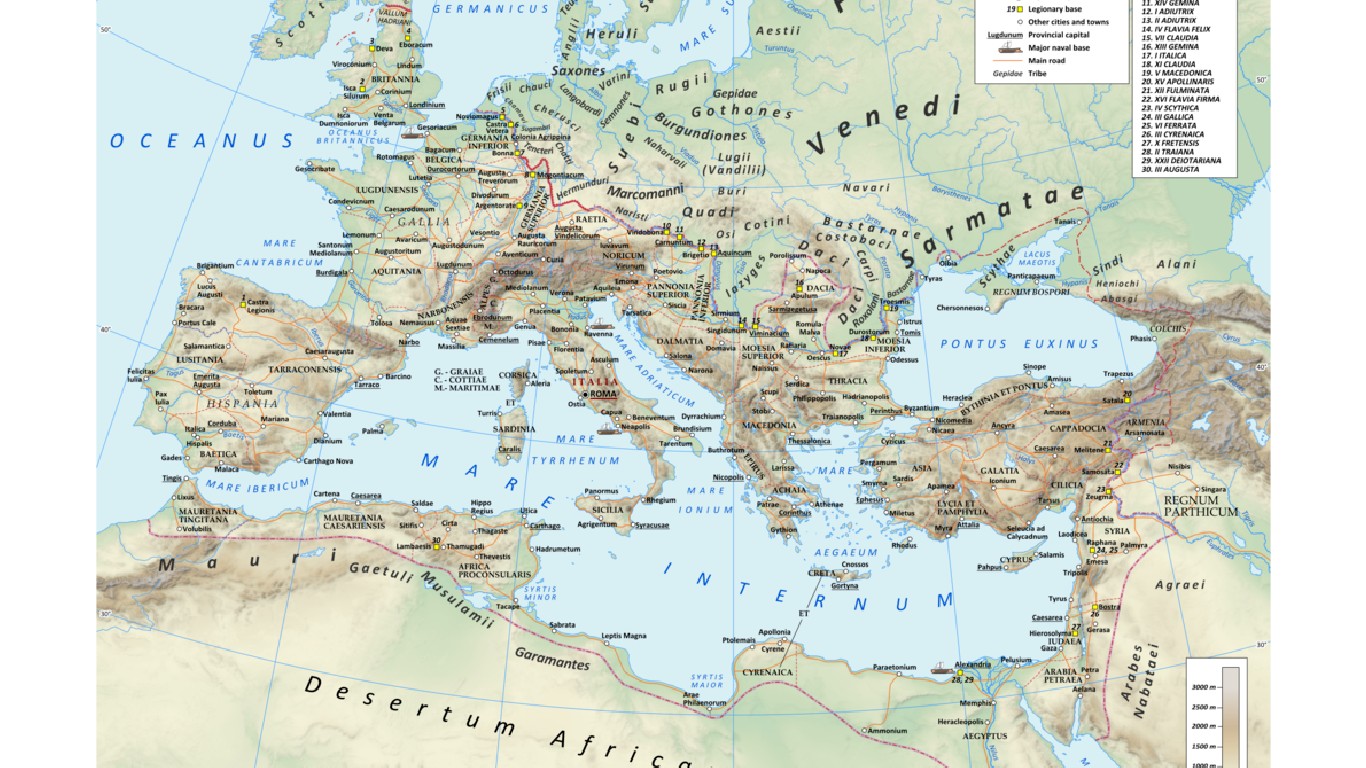

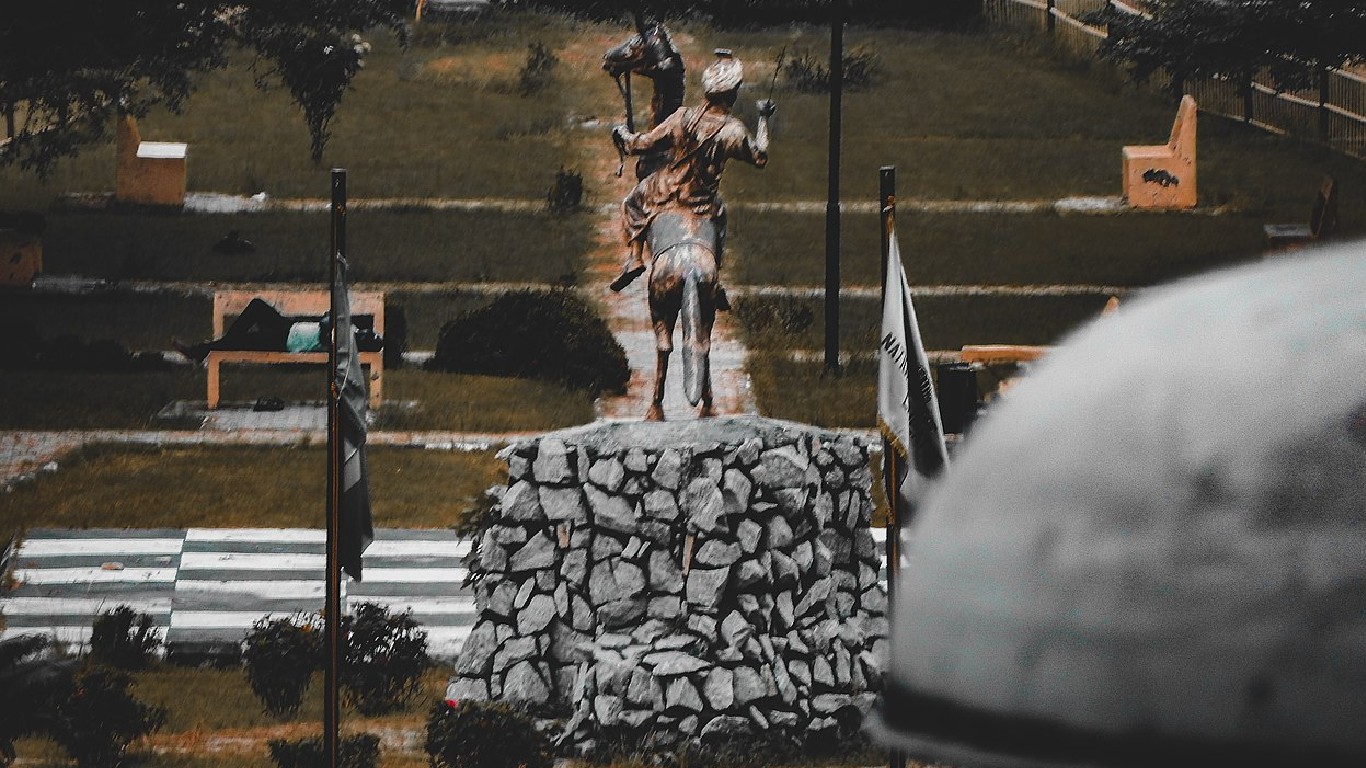



 24/7 Wall St.
24/7 Wall St.


